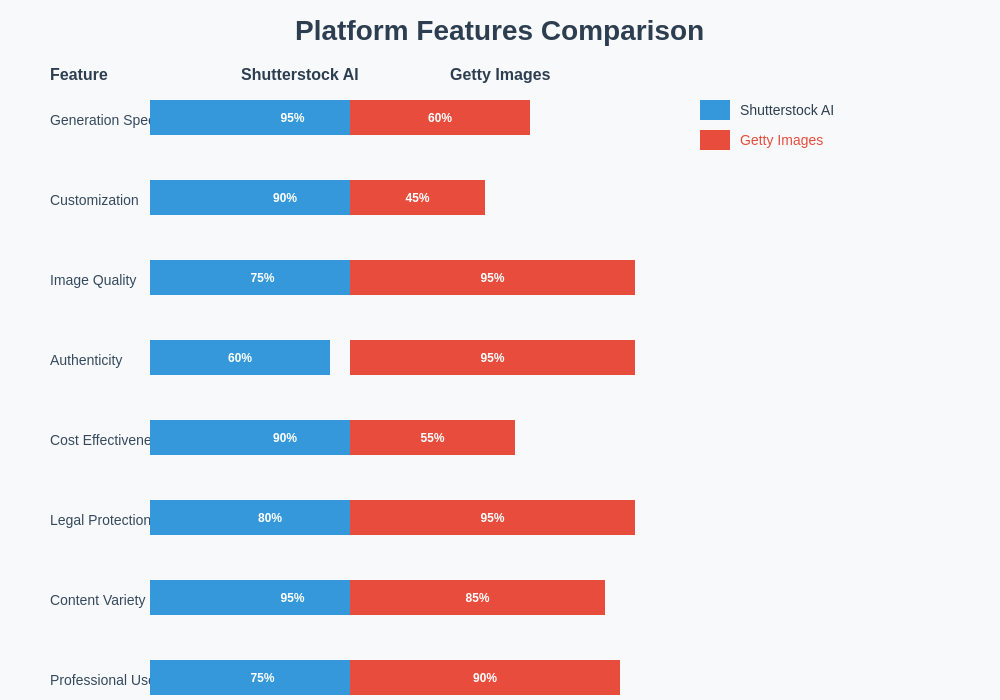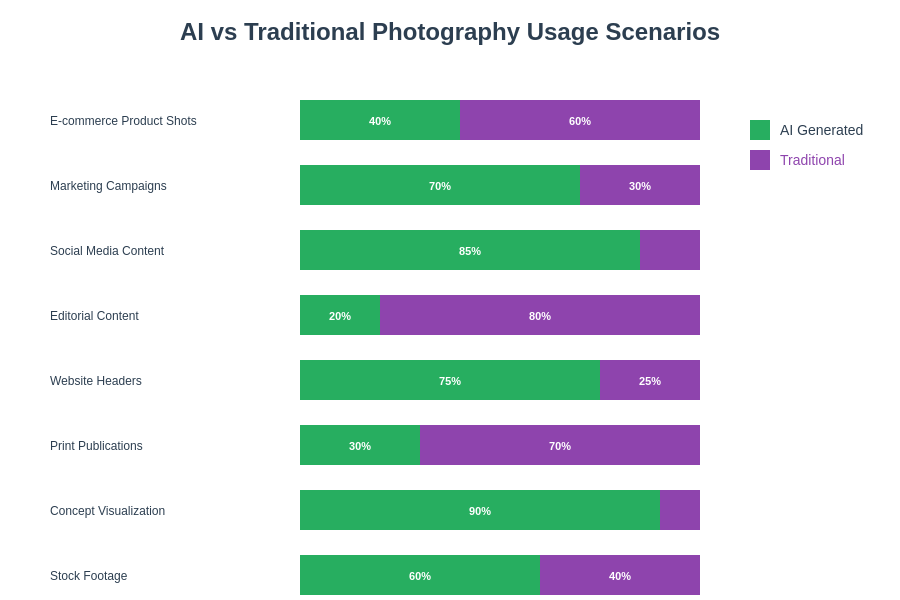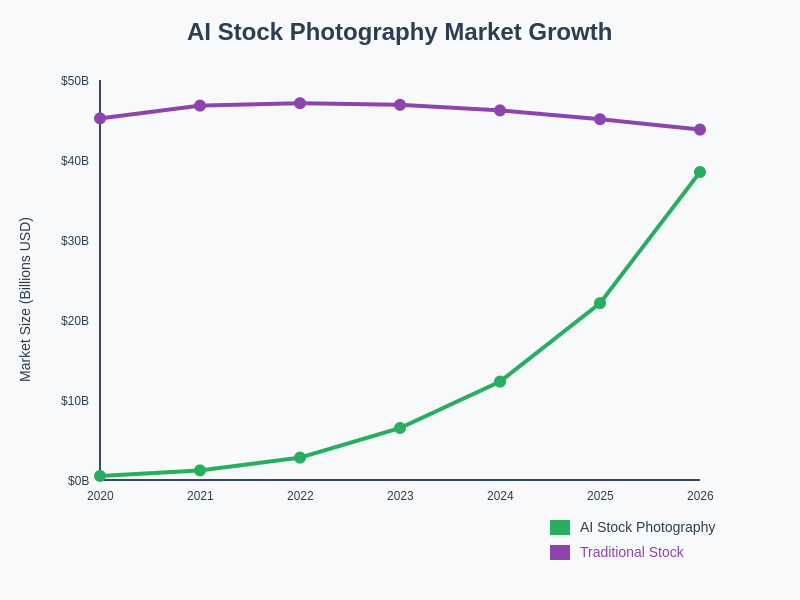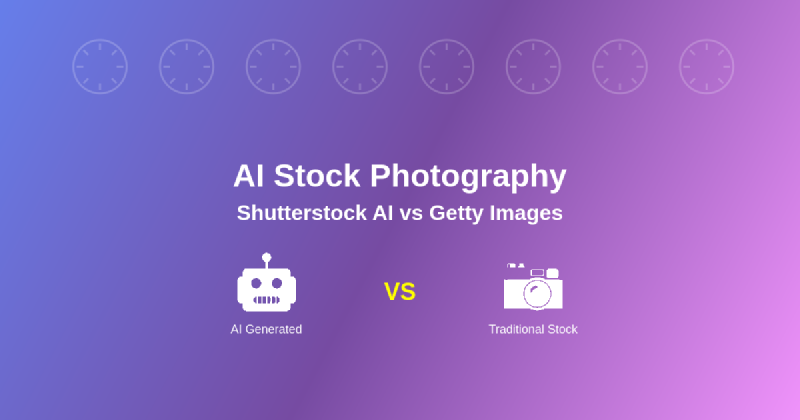The digital imagery landscape has experienced a revolutionary transformation with the integration of artificial intelligence into stock photography platforms, fundamentally altering how creative professionals, marketers, and content creators source and utilize visual content. This paradigm shift has positioned AI-generated imagery as a powerful alternative to traditional stock photography, offering unprecedented customization, cost-effectiveness, and creative flexibility that challenges conventional approaches to visual content creation.
Explore the latest AI trends in creative technology to understand how artificial intelligence continues to reshape creative industries and redefine the boundaries of digital content creation. The emergence of AI-powered stock photography platforms represents more than technological innovation; it signifies a fundamental reimagining of how visual content is conceived, produced, and distributed in the digital economy.
The Evolution of Stock Photography Through AI
Traditional stock photography has long served as the backbone of visual content marketing, providing businesses and creators with accessible, professionally produced imagery for various applications. However, the industry has faced persistent challenges including limited diversity, high licensing costs, overused imagery, and insufficient customization options that often resulted in generic, cookie-cutter visual solutions that failed to capture unique brand identities or specific creative visions.
The introduction of artificial intelligence into stock photography has addressed many of these limitations by enabling the generation of unique, customizable imagery that can be tailored to specific requirements, brand aesthetics, and creative concepts. This technological advancement has democratized access to high-quality visual content while simultaneously expanding creative possibilities beyond the constraints of traditional photography sessions, model releases, and location restrictions.
Shutterstock AI: Pioneering Generative Stock Photography
Shutterstock AI has emerged as a pioneering force in the AI-powered stock photography revolution, leveraging advanced machine learning algorithms and neural networks to generate original imagery based on text prompts and creative specifications. The platform’s AI technology draws from Shutterstock’s extensive library of over 400 million images to understand visual patterns, composition techniques, and aesthetic principles that inform the generation of new, original content that maintains professional quality standards while offering unlimited creative possibilities.
The platform’s generative capabilities extend beyond simple image creation to include sophisticated understanding of lighting, composition, color theory, and subject matter that enables the production of imagery suitable for professional marketing campaigns, editorial content, and commercial applications. Shutterstock AI’s integration with the company’s existing licensing infrastructure provides users with clear usage rights and commercial permissions that eliminate the legal complexities often associated with traditional stock photography licensing.
Experience advanced AI capabilities with Claude for comprehensive creative project planning and content strategy development that leverages the full potential of AI-powered visual content creation. The synergy between AI-generated imagery and intelligent content planning creates unprecedented opportunities for cohesive, impactful visual storytelling across multiple platforms and media formats.
Getty Images: Traditional Excellence Meets AI Innovation
Getty Images has maintained its position as a premium stock photography provider by combining its decades of experience in visual content curation with strategic integration of artificial intelligence technologies. The company’s approach to AI implementation focuses on enhancing the discovery, organization, and customization of its extensive library of professionally captured imagery while gradually incorporating AI-generated content that meets its rigorous quality and editorial standards.
Getty Images’ AI-powered features include advanced search capabilities that utilize computer vision and natural language processing to improve content discovery, automated tagging and categorization systems that enhance library organization, and intelligent cropping and editing tools that help users optimize imagery for specific applications and formats. The platform’s emphasis on maintaining editorial integrity and authenticity has resulted in a more conservative approach to AI-generated content that prioritizes quality control and brand safety over rapid expansion of AI capabilities.
The company’s extensive relationships with professional photographers, news organizations, and content creators provide a foundation of high-quality source material that informs their AI development while ensuring that generated content maintains the visual standards and authenticity that have established Getty Images as a trusted resource for premium visual content across industries.
Comparative Analysis: Features and Capabilities
The fundamental differences between Shutterstock AI and Getty Images extend beyond their approaches to AI integration to encompass distinct philosophies regarding content creation, quality control, and user experience. Shutterstock AI prioritizes accessibility and creative flexibility, offering users the ability to generate unlimited variations of imagery based on specific prompts and requirements, while Getty Images emphasizes curatorial excellence and brand safety through carefully vetted content that meets established professional standards.
Shutterstock AI’s generative capabilities enable users to create imagery that would be impossible or prohibitively expensive to capture through traditional photography, including fantastical scenes, historical recreations, and conceptual visualizations that push the boundaries of creative expression. The platform’s real-time generation capabilities allow for rapid iteration and refinement of visual concepts, enabling creative professionals to explore multiple design directions without the time and cost constraints associated with traditional photography sessions.
Getty Images’ approach focuses on augmenting rather than replacing traditional photography, utilizing AI to enhance the discoverability and usability of professionally captured content while maintaining the authenticity and emotional resonance that characterizes high-quality photography. The platform’s AI-powered search and recommendation systems help users identify the most appropriate imagery for their specific needs while providing tools for customization and optimization that enhance the utility of existing content.
Quality Assessment and Professional Standards
The quality evaluation of AI-generated imagery versus traditionally captured photography involves multiple dimensions including technical excellence, aesthetic appeal, authenticity, and commercial viability. Shutterstock AI has demonstrated remarkable capabilities in generating technically proficient imagery that meets professional standards for resolution, composition, and visual clarity, though the platform continues to refine its algorithms to address occasional artifacts and inconsistencies that can occur in complex scenes or specialized subject matter.
The authenticity and emotional resonance of AI-generated imagery represent ongoing challenges that both platforms address through different approaches. Shutterstock AI focuses on continuous improvement of its generative models to produce imagery that conveys genuine emotion and realistic scenarios, while Getty Images maintains its emphasis on human-captured content that inherently possesses the authenticity and spontaneity that characterizes professional photography.
Professional applications require imagery that not only meets technical specifications but also resonates with target audiences and effectively communicates intended messages. Both platforms have invested significantly in understanding these requirements and developing solutions that serve the diverse needs of creative professionals, marketing teams, and content creators across industries.

The comprehensive feature comparison reveals distinct strengths and specializations that make each platform suitable for different types of creative projects and professional requirements. Understanding these differences enables users to make informed decisions based on their specific needs, budget constraints, and creative objectives.
Pricing Models and Value Proposition
The economic considerations surrounding AI stock photography platforms involve complex calculations that extend beyond simple per-image costs to encompass usage rights, customization capabilities, time savings, and creative flexibility. Shutterstock AI typically offers competitive pricing models that leverage the cost efficiencies of AI generation to provide users with access to unlimited variations and customizations at fixed subscription rates, making it particularly attractive for high-volume users and creative agencies.
Getty Images maintains premium pricing that reflects the company’s investment in professional content creation, curatorial expertise, and comprehensive licensing frameworks that provide users with confidence regarding usage rights and legal protection. The platform’s pricing structure often includes enhanced licensing options, editorial permissions, and exclusive content access that justifies higher costs for users who require premium quality and comprehensive legal coverage.
The value proposition of each platform depends significantly on user requirements, project scope, and long-term content needs. Organizations requiring large volumes of customizable imagery for marketing campaigns, social media content, and digital applications may find greater value in AI-generated solutions, while those prioritizing authenticity, exclusivity, and editorial integrity may prefer traditional stock photography approaches.
Discover comprehensive AI research capabilities with Perplexity for market analysis and competitive intelligence that informs strategic decision-making regarding visual content platforms and creative technology investments. The integration of research capabilities with creative tools enables more informed choices that align with business objectives and creative goals.
Licensing and Legal Considerations
The legal landscape surrounding AI-generated imagery presents complex considerations that both platforms address through comprehensive licensing frameworks and legal protections. Shutterstock AI provides users with clear commercial usage rights for generated imagery while maintaining policies that address potential copyright concerns and ensure that generated content does not infringe upon existing intellectual property rights.
Getty Images’ approach to licensing maintains its traditional emphasis on comprehensive legal protection and clear usage rights, extending these principles to AI-enhanced and AI-generated content where applicable. The company’s extensive experience in intellectual property law and licensing negotiations provides users with confidence regarding the legal validity and commercial applicability of accessed content.
The evolution of copyright law and intellectual property regulations regarding AI-generated content continues to develop, with both platforms actively monitoring legal developments and adjusting their policies to ensure compliance with emerging regulations while protecting user interests and creative rights.
Creative Applications and Use Cases
The practical applications of AI stock photography span diverse industries and creative disciplines, each presenting unique requirements and opportunities for leveraging AI-generated imagery. Marketing and advertising professionals utilize AI-generated content for rapid prototyping, A/B testing of visual concepts, and creation of culturally sensitive imagery that avoids the stereotypes and limitations often present in traditional stock photography.
Editorial and publishing applications benefit from AI’s ability to generate imagery for abstract concepts, historical recreations, and speculative scenarios that would be difficult or impossible to capture through conventional photography. The technology enables publishers to create compelling visual content that supports storytelling while maintaining consistency with editorial standards and brand guidelines.
E-commerce and product marketing applications leverage AI generation for creating lifestyle imagery, product demonstrations, and marketing scenarios that showcase products in diverse contexts without the costs and logistical challenges associated with traditional product photography sessions.

The comprehensive analysis of usage scenarios demonstrates how different types of creative projects benefit from either AI-generated or traditionally captured imagery, providing guidance for professionals seeking to optimize their visual content strategies across various applications and industry requirements.
Technology Infrastructure and Performance
The technical infrastructure supporting AI stock photography platforms requires sophisticated computational resources, advanced machine learning models, and robust content delivery networks that ensure reliable performance and consistent quality across diverse user requirements. Shutterstock AI has invested heavily in cloud computing infrastructure and specialized AI hardware that enables real-time image generation while maintaining quality standards and minimizing processing delays.
Getty Images’ technical approach emphasizes the integration of AI capabilities with existing content management systems, search algorithms, and licensing frameworks that preserve the platform’s established functionality while enhancing user experience through intelligent features and improved content discovery mechanisms.
Performance considerations include generation speed, image quality consistency, system reliability, and scalability that enables platforms to serve growing user bases without compromising service quality or user experience. Both platforms continue to invest in infrastructure improvements and algorithm refinements that enhance performance while expanding creative capabilities.
Integration and Workflow Compatibility
Modern creative workflows require seamless integration between stock photography platforms and existing design tools, content management systems, and marketing platforms that enable efficient content creation and distribution processes. Shutterstock AI provides API access and plugin integrations that allow users to generate and access imagery directly within their preferred design environments, streamlining creative workflows and reducing time-consuming platform switching.
Getty Images offers comprehensive integration options that connect with professional design software, digital asset management systems, and enterprise content platforms, enabling organizations to incorporate high-quality imagery into established creative processes without disrupting existing workflows or requiring extensive training.
The compatibility considerations extend beyond technical integration to encompass file format support, resolution options, color space management, and metadata handling that ensure imagery meets professional production requirements across various output formats and distribution channels.
Quality Control and Content Moderation
Content moderation and quality control represent critical aspects of stock photography platforms that ensure imagery meets professional standards while complying with legal requirements and community guidelines. Shutterstock AI employs automated moderation systems combined with human oversight to identify and filter problematic content, ensuring that generated imagery maintains appropriate standards for commercial and professional use.
Getty Images leverages its extensive experience in editorial standards and content curation to maintain rigorous quality control processes that evaluate both traditional and AI-enhanced content for accuracy, appropriateness, and commercial viability. The platform’s established relationships with professional photographers and content creators provide additional layers of quality assurance and editorial oversight.
The ongoing development of content moderation technologies and editorial guidelines reflects the evolving nature of AI-generated content and the need for platforms to balance creative freedom with responsible content creation and distribution practices.
Future Developments and Industry Trends
The trajectory of AI stock photography continues to evolve rapidly, with both platforms investing in research and development initiatives that promise to expand creative capabilities while addressing current limitations and challenges. Emerging technologies including advanced neural networks, improved training methodologies, and enhanced computational resources are expected to deliver significant improvements in image quality, generation speed, and creative flexibility.
The integration of AI with other creative technologies including video generation, 3D modeling, and augmented reality applications represents potential expansion opportunities that could transform stock photography platforms into comprehensive creative content ecosystems that serve diverse multimedia requirements.
Industry trends indicate growing acceptance of AI-generated content across professional applications, driven by improvements in quality, cost-effectiveness, and creative capabilities that make AI-generated imagery increasingly viable for mainstream commercial and editorial use.

The market analysis reveals substantial growth potential for AI-powered creative platforms, driven by increasing demand for customizable, cost-effective visual content that supports the expanding digital economy and evolving creative industry requirements.
Strategic Recommendations for Creative Professionals
The selection between Shutterstock AI and Getty Images requires careful consideration of project requirements, budget constraints, quality standards, and long-term creative objectives. Creative professionals working on projects requiring high volumes of customizable imagery, rapid iteration capabilities, and cost-effective solutions may find greater value in AI-generated platforms that offer flexibility and economic advantages.
Organizations prioritizing brand safety, editorial integrity, and premium quality may prefer traditional stock photography approaches that provide established quality standards and comprehensive legal protections. The decision often involves balancing creative flexibility with risk management considerations that vary depending on industry requirements and organizational policies.
A hybrid approach that leverages both AI-generated and traditionally captured imagery may provide optimal results for many creative professionals, enabling them to capitalize on the strengths of each approach while mitigating potential limitations through strategic platform selection based on specific project requirements.
The continued evolution of both platforms suggests that the distinction between AI-generated and traditional stock photography may become increasingly blurred as technologies improve and creative applications expand. Staying informed about platform developments and emerging capabilities enables creative professionals to make strategic decisions that support their evolving creative and business objectives.
Conclusion
The comparison between Shutterstock AI and Getty Images represents more than a simple platform evaluation; it reflects the broader transformation of creative industries through artificial intelligence integration and the ongoing redefinition of visual content creation, distribution, and utilization. Both platforms offer valuable capabilities that serve different aspects of the modern creative landscape, with AI-generated solutions providing unprecedented flexibility and cost-effectiveness while traditional approaches maintain advantages in authenticity, quality assurance, and editorial standards.
The future of stock photography lies not in the replacement of traditional methods with AI alternatives, but in the intelligent integration of both approaches to create comprehensive visual content ecosystems that serve the diverse and evolving needs of creative professionals, businesses, and content creators across industries. Understanding the strengths and limitations of each approach enables informed decision-making that maximizes creative potential while meeting professional requirements and business objectives in an increasingly competitive and dynamic digital marketplace.
Disclaimer
This article is for informational purposes only and does not constitute professional advice regarding platform selection or creative technology investments. The analysis is based on publicly available information and general industry observations. Readers should conduct their own research and consider their specific requirements, budget constraints, and professional needs when evaluating stock photography platforms. Platform features, pricing, and capabilities may vary and are subject to change without notice.
